Color vs. black-and-white: Photography debate stirred by new Henri Cartier-Bresson exhibition
posted Friday, November 9, 2012 at 6:47 PM EDT
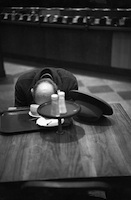
A new gallery exhibition at Somerset House in London that runs through January 27, 2013, bears the provocative title "Cartier-Bresson, A Question of Colour." The show presents 15 rarely seen black-and-white photos by famed French photographer Henri Cartier-Bresson alongside 75 color prints by 15 noted photographers from Europe and North America.
What is the "Question of Color," you ask? Well, Cartier-Bresson -- or HCB as I sometimes call him -- was a master of black-and-white images who openly disparaged color photography, primarily because of its technical and aesthetic limitations at the time (the 1950s). However, the color photographers featured in this show all claim HCB as one of their prime influences. Therein lies the contrast, the conflict, the "Question of Colour."
HCB did indeed shoot in color, but was so unsatisfied with the results that he never shared them. The color photographers featured in this exhibition are all very talented, and you could say they shoot in a Cartier-Bresson "style" though that does them a disservice. While -- like so many of us -- they have clearly learned from HCB, they have moved on to find their own directions. Consequently, many of the photos in the show are nothing like HCB's images, though they are all great photos.
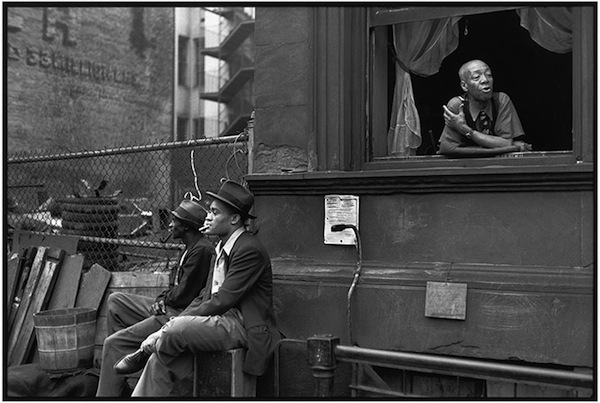
Harlem, New York, 1947
Henri Cartier-Bresson
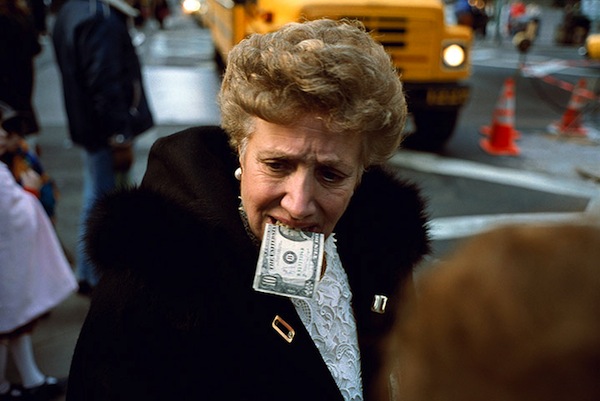
Untitled ($10 bill in mouth), New York City, 1992
Jeff Mermelstein
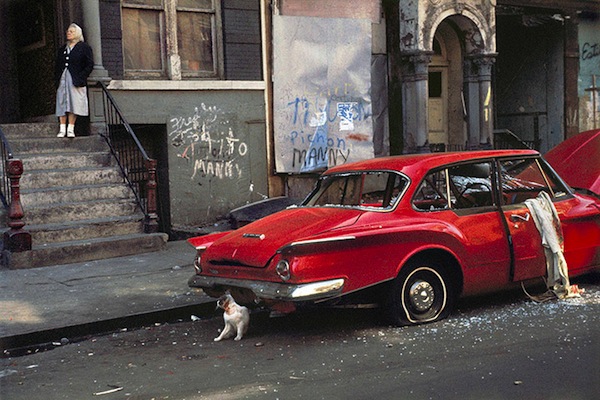
Cat Next to Red Car, New York, 1973
Helen Levitt
One thing I think the exhibition demonstrates, perhaps a bit unconsciously, is that often color overpowers content. In almost every image, color catches our eyes first, disrupting the delicate balance between the decisive moment and the geometry that were quintessential to HCB's work. In a black-and-white image, without the distraction of color, we see the subject and its context more directly and can connect with the photographer’s intent more easily.
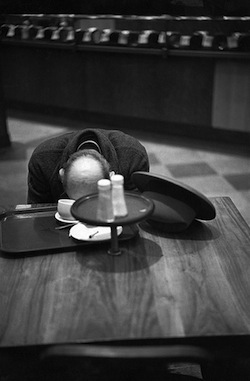
Brooklyn, New York, 1947
Henri Cartier-Bresson
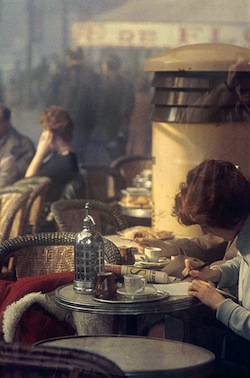
Paris, 1959
Saul Leiter
The visual domination of color over content is at the heart of the debate of “Question of Colour,” however the argument is a day late and a dollar short for me. The broader debate about color did not start in the 1950s with HCB, but instead more than a decade later, when improvements in 35mm color slide films and printing technology forever changed photography. But it wasn't merely the technical advancements that tipped the photographic scales in favor of color; a convergence of several other factors played a critical role, too.
In the late 1960s, color TVs became widely available stateside, and soon the Ed Sullivan show and news of the Vietnam War came into homes in a peacock’s tail full of color. At the same time, the exuberance of "flower power" and psychedelics made the whole world burst with rainbow brilliance. Audiences and clients alike demanded color in all their media. Meanwhile, black-and-white images were shuffled off to the realm of galleries and museums.
As a young photographer, I studied and worked with many of HCB’s generation. These were photographers who were part of the inner circle of Magnum and friends of HCB. They struggled with the black-and-white versus color issue, too. However, few simply chose either/or; that just wasn’t how most thought about their craft. Many experimented with the possibilities offered by a lightweight, multi-lensed, Leica or Nikon loaded with Kodachrome or Fujichrome film. Some fully embraced color, including Pete Turner, Ernst Haas and Marc Rimbaud.
What I learned from them, and I believe is important, is the idea that color is not a question but rather an answer. You don’t try to shoot around color. You shoot with it. Then you add the decisive moment and geometry. Because color so dominates the image, you have to embrace it.
It is a pleasure for me that these rarely shown HCB photos and the color work of the other 15 photographers are all getting a chance to be seen by the public. Despite the show's premise, to me there really isn't a need to stir up a debate about black-and-white versus color photography. As modern photographers, we are all free to shoot in black-and-white or color. Both have their pros and cons. I'm simply happy when I take a good photograph.
What do you think about the color vs black-and-white issue? Is color as often a distraction as a positive element in your own work? Do you shoot one, the other, or both? When and why do you choose black-and-white?